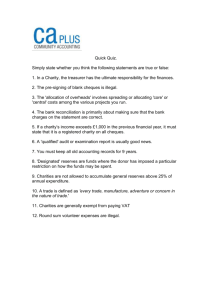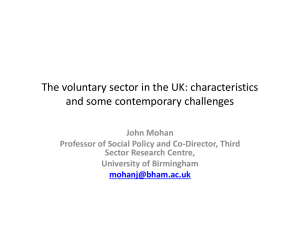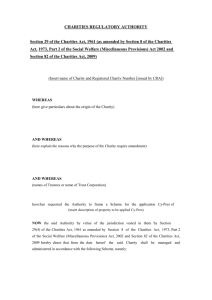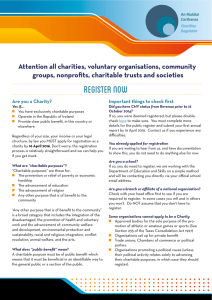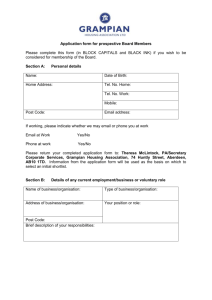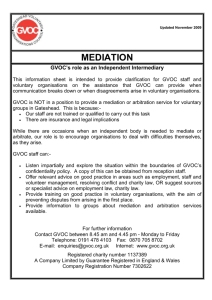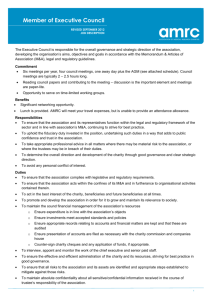Andrew Hind Presentation
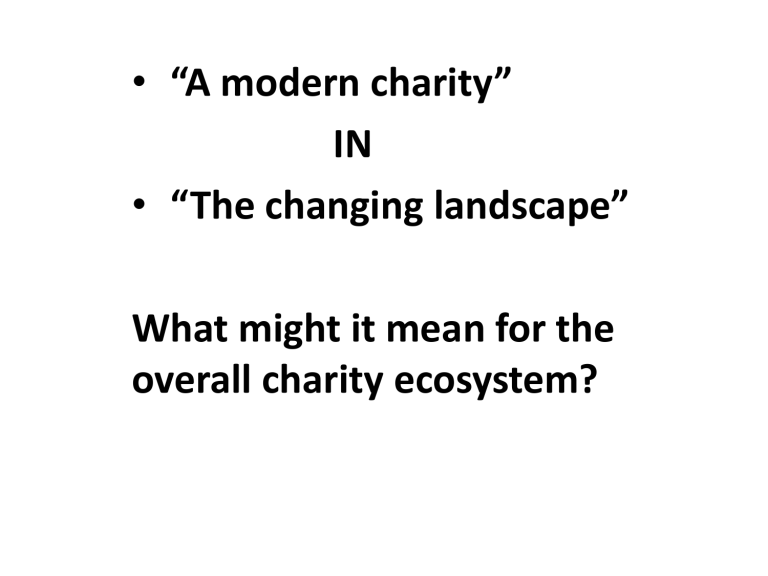
• “A modern charity”
IN
• “The changing landscape”
What might it mean for the overall charity ecosystem?
Paul’s ‘cooking ingredients’
• Brightest thinkers/most skilled practitioners
• Enterprising, growing (faster than competitors)
• Strong brand, well-positioned with stakeholders
• A strategic culture – analysing/planning
• Financially sustainable
• Delivering quality services, with like-minded partners, that reduce crime
More impact and more influence
The UK charity universe in 2011
• 200,000 registered charities
• Total sector income over £50 billion
• Investments £80 billion
• Only 1,400 with income over £5m
• 160,000 with income <£25k
• 20% in the middle ground
Universal features of a ‘modern charity’?
• A strategic culture
• Financially sustainable
• Transparent and accountable
• Strong focus on outcomes and public benefit
Payment by results
• So the challenge for the voluntary sector is to gear up for this
• And to shift its emphasis away from “can we find someone to continue funding what we are already doing” to: o Will anyone want to buy and make use of our products and services?
o Are there enough people out there who will want to buy what we do?
o Can we provide our services within prescribed costs and quality guidelines?
The changing landscape
• 38,000 charities receive a government grant or deliver services under contract
• But 140,000 have no relationship with the state
• Government funding is 36% of sector income
• An increase from 27% in 1991
• There has been a major shift from grants to contracts – 50/50 ten years ago; 25/75 now
Huge cuts in public spending
• £81bn of cuts over next four years to 2014-15
• Central government departments cut by 19%
• Funding to local authorities cut by up to 30%
• And two further years of cuts forecast yesterday
‘Big Society’ may lack traction, but there are real changes appearing
• Localism Act 2011
• Remodelling public service delivery –
‘provider agnostic’ and payment-byresults
• New ideas around giving – social finance
The sector’s ecosystem is changing
A squeezed middle
• The large, national household names are riding the storm…
• …and community organisations continue to thrive
• But life is getting tougher for middle-sized organisations
Many service deliverers increasingly dependent on state funding
• Will they become constrained in their campaigning…
• …and/or relegated to role of largely powerless sub-contractors?
• “ Charities assisting commercial organisations to maximise their profits ” (NCIA)
The rise of social enterprise
• Big Society Capital has £600m to invest over four years
• Will ‘traditional’ charities be able to adjust to new forms of financing?
• What is social enterprise, and might it be captured by for-profit interests?
It’s all about retaining public trust and confidence
• Charity must retain its distinctive brand if public trust is to remain high
2005 Mean Score: 6.3
2008 Mean Score: 6.6
2005
2008
23%
18%
22%
19%
20%
22%
11%
10%
3%
1%
0
1%
1
3%
2%
2
3%
3
5%
4%
4 5
5%
8%
6%
6 7 8 9 10
Don’t trust them at all Source: Ipsos MORI
Trust them completely
Sector behaviour the public want to see
• Transparent and accountable
• Independent, non-political
• Brave and innovative
• Collaborative, not competitive
• Providing VFM, and delivering public benefit
• Building public trust and confidence
